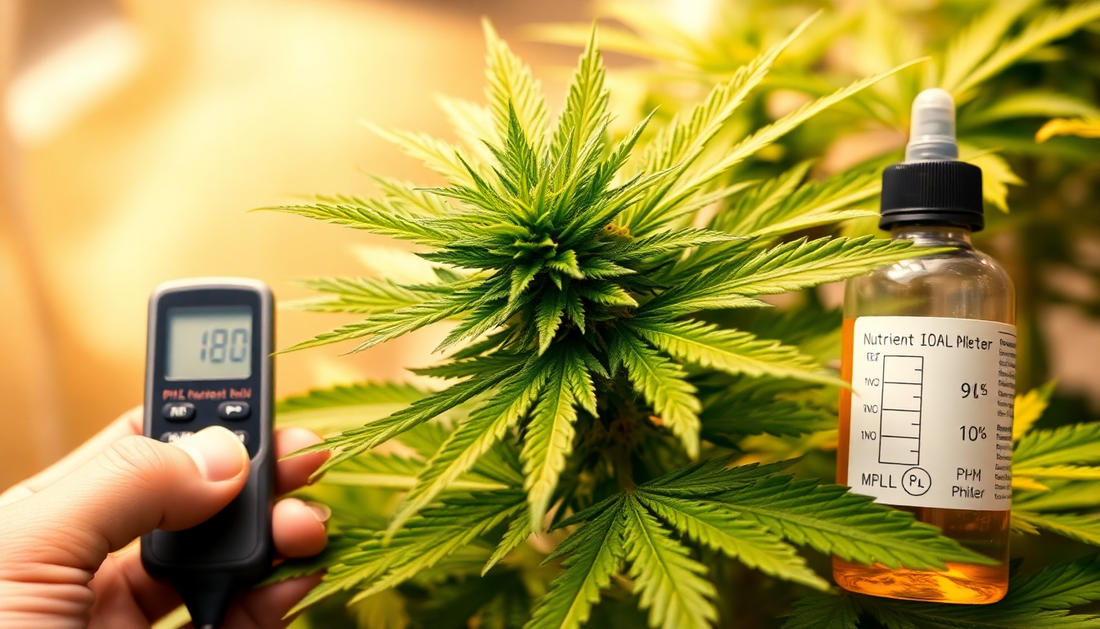
When to Stop Feeding Nutrients to Cannabis Plants: A Complete Guide
Growing healthy, high-yielding cannabis plants requires careful nutrient management throughout the plant’s life cycle. While nutrients are essential for vigorous growth, there’s a crucial point when you need to stop feeding them. Knowing exactly when to stop nutrients can significantly impact the flavor, aroma, and overall quality of your harvest. In this guide, we’ll cover the ideal timing and steps for ceasing nutrient use to achieve the best results.
Understanding the Cannabis Growth Stages
To know when to stop nutrients, you must first understand the key stages of cannabis growth:
- Seedling Stage (0–3 weeks): Nutrient requirements are minimal during this stage. Cannabis seedlings thrive with just water and light nutrients if necessary.
- Vegetative Stage (3–8 weeks): The plant focuses on producing foliage and establishing a strong root system. Nitrogen-rich nutrients are critical for healthy growth.
- Flowering Stage (8–16 weeks): The plant shifts its energy to producing buds. Nutrient needs change during this stage, with increased demand for phosphorus and potassium.
- Final Weeks of Flowering (Weeks 6–8+): This is when you prepare for harvest. It’s crucial to reduce and eventually stop feeding nutrients to allow the plant to flush out excess salts and compounds.
Why You Should Stop Feeding Nutrients Before Harvest
Stopping nutrients before harvest is essential for improving the quality of your cannabis. Continuing to feed nutrients too close to harvest can lead to a harsh taste and chemical residue in the buds. Here are the main reasons for stopping nutrients:
1. Better Flavor and Aroma
Excess nutrients can leave behind residual salts and chemicals that affect the taste and aroma of your buds. Flushing the plant ensures a clean, natural flavor profile.
2. Smoother Smoke
When nutrients aren’t flushed out, the smoke can be harsh and cause coughing. Properly stopping nutrients ensures a smoother and more enjoyable smoking experience.
3. Healthier Bud Appearance
Nutrient buildup can cause buds to darken or lose their natural color. Stopping nutrients helps buds retain their vibrant green and orange hues, resulting in a more attractive final product.
When to Stop Feeding Nutrients
The exact timing for stopping nutrients depends on whether you’re growing an indica, sativa, or hybrid strain. In general, you should stop feeding nutrients 1–2 weeks before harvesting. Here’s a more detailed breakdown:
1. Indica Strains
Indica strains typically have a shorter flowering period of 6–8 weeks. Stop feeding nutrients about 10–14 days before harvest.
2. Sativa Strains
Sativa strains have a longer flowering period, often taking 10–12 weeks to fully mature. Stop feeding nutrients 14–21 days before harvest.
3. Hybrid Strains
Hybrid strains vary in flowering time, depending on their genetic makeup. Monitor your plant’s trichomes and growth cycle to determine the right time, but a safe range is 10–14 days before harvest.
4. Autoflowering Strains
Autoflowering strains generally mature in 8–10 weeks. Stop feeding nutrients 7–10 days before harvest for these faster-growing plants.
Flushing Your Cannabis Plants
Flushing is a critical step that accompanies stopping nutrients. This process involves giving your plants only pure water to flush out any remaining nutrients and salts in the growing medium.
1. How to Flush
- Use clean, pH-balanced water (pH 6.0–6.8 for soil and 5.5–6.5 for hydroponic systems).
- Water your plants generously, allowing runoff to carry excess nutrients out of the soil.
- For hydroponic systems, replace the nutrient solution with pure water for the last 5–7 days before harvest.
2. How Long to Flush
- Soil Growers: Flush for 10–14 days before harvest.
- Coco Coir Growers: Flush for 7–10 days.
- Hydroponic Growers: Flush for 5–7 days, as hydro systems clear nutrients more quickly.
3. Signs of a Proper Flush
A properly flushed plant will start to show yellowing leaves as it consumes its remaining stored nutrients. This is a normal and healthy sign that the plant is preparing for harvest.
Common Mistakes to Avoid
Stopping nutrients and flushing can significantly improve your harvest, but there are some common mistakes to avoid:
1. Stopping Nutrients Too Early
Stopping nutrients too early can deprive your plant of essential nutrients during a critical phase of bud development, reducing yield and potency.
- Solution: Monitor your plant’s growth cycle carefully and use a magnifying glass or microscope to check trichome development.
2. Not Flushing Properly
Failing to flush thoroughly can leave residual nutrients in the plant, affecting the taste and smoothness of your final product.
- Solution: Ensure you flush with plenty of water and test the runoff’s electrical conductivity (EC) to ensure nutrient levels are decreasing.
3. Overwatering During the Flush
It’s easy to overwater when flushing, which can stress the plant and lead to root problems.
- Solution: Water in moderation and ensure proper drainage.
Monitoring Trichomes for Harvest Readiness
Another way to determine when to stop nutrients is by monitoring the trichomes (the tiny resin glands on the buds). Trichomes change color as the plant reaches maturity:
- Clear Trichomes: The plant is not yet ready for harvest.
- Milky Trichomes: This is the peak potency stage, ideal for harvesting.
- Amber Trichomes: Indicates a more sedative effect; this is the end of the harvest window.
Conclusion
Knowing when to stop feeding nutrients to your cannabis plants is key to producing top-quality buds with great flavor, aroma, and smoothness. Stop feeding nutrients 1–2 weeks before harvest and flush your plants thoroughly with pure water to remove any residual salts. By following this guide and paying close attention to your plant’s growth stage and trichome development, you’ll ensure a successful and satisfying harvest.
